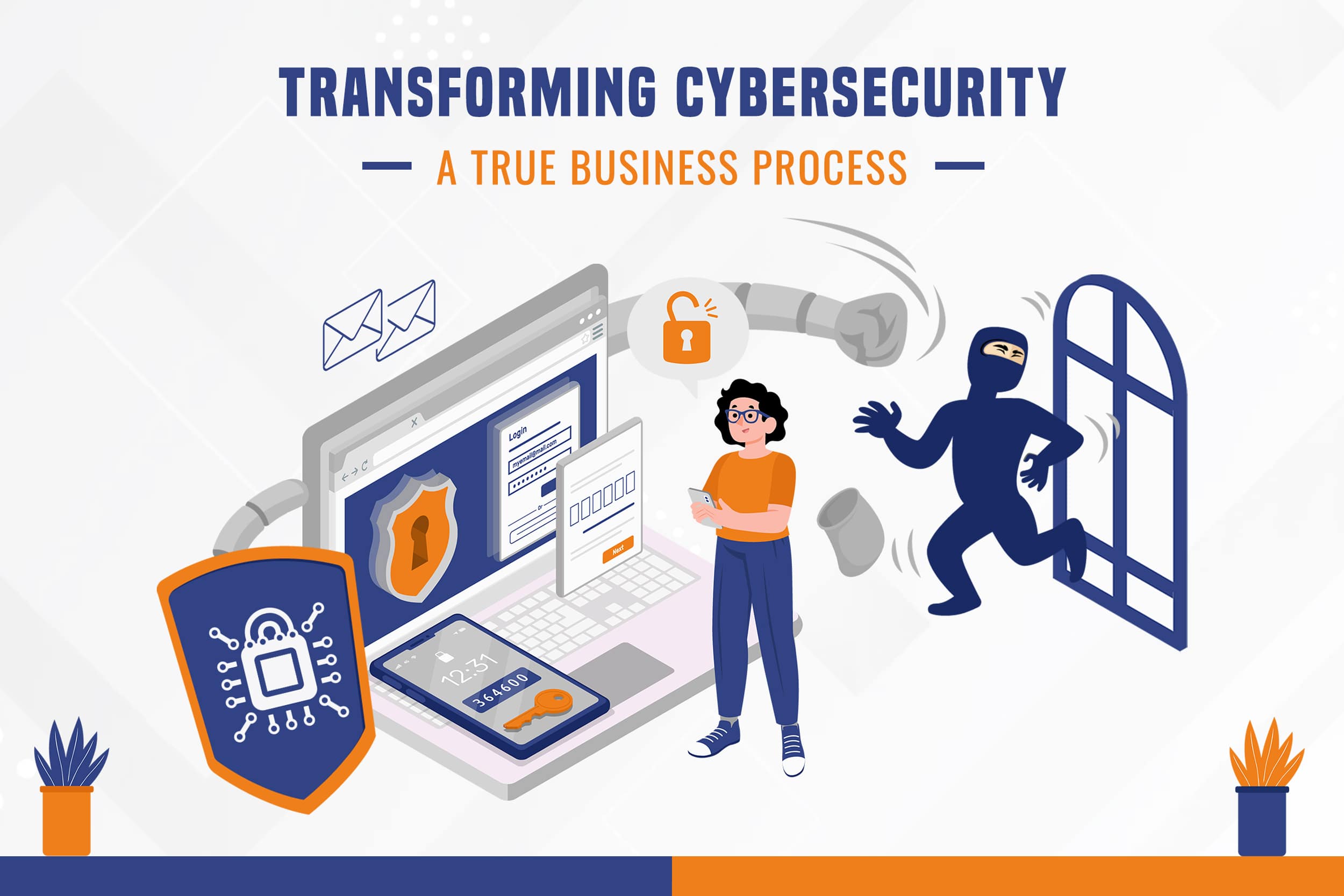
Transforming Cybersecurity Into A True Business Process
In today's digital age, cybersecurity is no longer just the concern of IT departments or security experts; it's a fundamental business process that impacts every aspect of an organization. As cyber threats continue to evolve and grow in sophistication, it's essential for businesses to shift their perspective and treat cybersecurity as an integral part of their overall strategy and operations. In this article, we'll explore why transforming cybersecurity into a true business process is imperative and how organizations can achieve this transformation.
The Evolution of Cyber Threats
The cybersecurity landscape has undergone a significant transformation over the past few years. Gone are the days when simple antivirus software and firewalls could provide adequate protection. Today, cybercriminals employ highly advanced techniques, such as social engineering, ransomware, and zero-day exploits, to target organizations of all sizes.
These cyber threats are not just technical challenges; they represent a real and present danger to an organization's reputation, finances, and even its very existence. High-profile data breaches and cyberattacks have demonstrated the devastating impact they can have on a company's bottom line and public image.
The Traditional Approach to Cybersecurity
Historically, many organizations have approached cybersecurity as a standalone function, separate from their core business processes. IT departments or dedicated security teams with proper Technical Learning were tasked with implementing security measures, often in a reactive manner, responding to the latest threats as they emerged.
This siloed approach to cybersecurity is no longer sufficient. Cyber threats are dynamic and constantly evolving, and a disjointed response is akin to playing catch-up in a never-ending game. Moreover, cybersecurity is not merely a technical challenge; it's a strategic one that requires a holistic and proactive approach.
The Need for a Business-Centric Approach
To effectively address cybersecurity challenges in today's environment, organizations must shift their mindset and treat cybersecurity as a fundamental business process. Here are some key reasons why:
- Risk Management:
Cybersecurity is ultimately about managing risk. Organizations need to assess the risks associated with their digital operations, prioritize them, and develop strategies to mitigate them. This requires a comprehensive understanding of the business, its assets, and its vulnerabilities for which Corporate Technical Training is necessary.
- Compliance and Regulations:
Many industries are subject to strict regulatory requirements related to data protection and cybersecurity. Non-compliance can result in severe financial penalties and damage to a company's reputation. A business-centric approach ensures that compliance is integrated into daily operations.
- Reputation Management:
A cyber incident can quickly erode customer trust and damage a company's brand. A proactive cybersecurity strategy that aligns with the organization's values and customer expectations is essential to safeguarding its reputation.
- Business Continuity:
Cyberattacks can disrupt operations, leading to significant downtime and financial losses. A business-centric approach includes robust disaster recovery and business continuity planning to ensure that operations can continue even in the face of a cyber incident.
Steps to Transform Cybersecurity into a Business Process
- Executive Leadership and Buy-In:
The first step in transforming cybersecurity is to secure executive leadership and buy-in. Senior leaders must recognize the importance of cybersecurity as a business process and allocate the necessary resources, budget, and Corporate Technical Training.
- Risk Assessment and Prioritization:
Conduct a comprehensive risk assessment to identify the organization's most critical assets and vulnerabilities. Prioritize these risks based on their potential impact on the business.
- Integration with Business Strategy:
Cybersecurity should align with the organization's overall business strategy. It should support the achievement of business objectives rather than being a hindrance.
- Security by Design:
Implement a "security by design" approach, where security considerations are integrated into the development of products, services, and processes from the outset.
- Employee Training and Awareness:
Cybersecurity is not solely a technical issue; it involves human factors as well. Employees should receive regular training through Technical Training Courses on cybersecurity best practices and be aware of their role in safeguarding the organization's data.
- Incident Response Plan:
Develop a robust incident response plan that outlines how the organization will react in the event of a cyber incident. This plan should be regularly tested and updated to reflect evolving threats.
- Continuous Monitoring and Adaptation:
Cybersecurity is not a one-time effort but an ongoing process. Continuous monitoring of the threat landscape and adaptation of security measures are critical to staying ahead of cyber threats.
- Collaboration and Communication:
Foster a culture of collaboration and communication between IT, security teams, and other departments. Information sharing and cross-functional cooperation are essential for effective cybersecurity.
- Vendor Risk Management:
If your organization relies on third-party vendors or suppliers, assess their cybersecurity practices and ensure they meet your security standards.
- Metrics and KPIs:
Focus on some Technical Learning through defining the key performance indicators (KPIs) and metrics to measure the effectiveness of your cybersecurity efforts. Regularly review and analyze these metrics to make data-driven improvements.
Final Words
In today's digital landscape, cybersecurity is not an isolated concern but a core business process. Organizations must shift their mindset from viewing cybersecurity as a technical issue to recognizing it as a strategic imperative. By integrating cybersecurity into their overall business strategy, organizations can better protect their assets, reputation, and customer trust. The transformation of cybersecurity into a true business process is not only necessary but also a competitive advantage in an increasingly connected and digital world.
